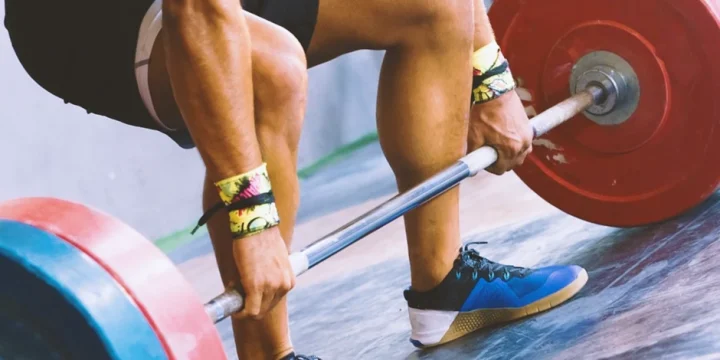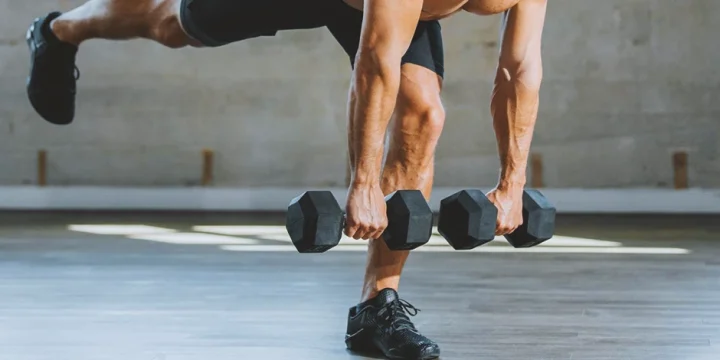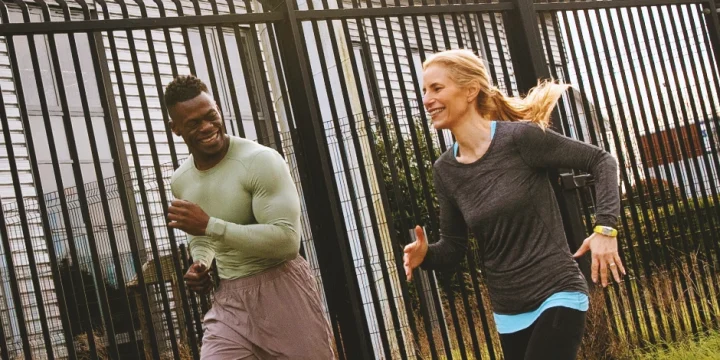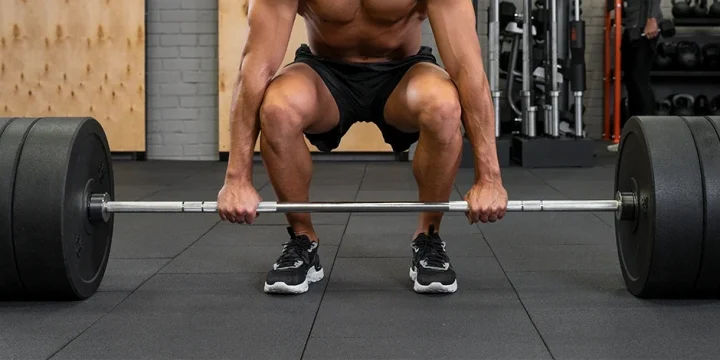Among the various barbell deadlift variations, the trap bar and conventional deadlift stand out as popular choices.
Throughout my fitness experience, spanning around a decade, I have practiced both variations in my own training and with numerous clients.
However, before you select which one to master, it is crucial to understand their advantages and disadvantages and how they align with your fitness objectives.
Therefore, in this article, I will discuss the benefits, the muscles that worked, and the similarities and differences between the two so you can decide which works better for you.
Quick Summary
- The trap bar deadlift is a knee-dominant variation using a unique hexagonal barbell that targets the quads for hip flexion, and a conventional deadlift is a hip-dominant exercise.
- Both the trap bar and conventional deadlifts require lifting heavy weights from the ground, utilizing the hip hinge movement, and activating muscles similarly.
- A study cited by the National Institutes of Health (NIH) demonstrates that deadlifting for ten weeks can significantly enhance rapid torque characteristics and increase vertical jump height.
- In my view, the trap bar deadlifts, with their side handles allowing a neutral grip, are simpler to master and safer for those with back problems, enabling more explosive movements compared to the conventional barbell's mixed grip requirement.
Trap Bar Deadlift vs. Conventional: How To Do Them
Trap bar and barbell deadlifts are great exercises for building muscle and strength in the lower back, hips, and legs.
Conventional Barbell Deadlift

Here are the steps to perform a conventional deadlift:
- Position the bar so that it is above the top of your shoelaces, and stand with your feet hip-width apart.
- Push your hips back and lean forward with an upright torso.
- Bend down and grip the bar with your hands placed shoulder-width apart, using a double overhand grip.
- Inhale and pull up slightly on the bar while allowing your hips to lower in a seesaw motion.
- While dropping your hips and pulling up on the bar, engage your lat muscles and ensure your armpits are directly above the bar.
- Generate force by pushing through your entire foot and concentrating on pushing the floor away from you.
- Keep the bar straight as you extend your knees and hips.
- Once your hips are fully extended, reverse the motion by pushing your hips back and leaning forward again.
- Lower the bar back to the floor and repeat for reps.
Trap Bar Deadlift

The trap bar deadlift, or hex bar deadlift, is a variation of the deadlift exercise involving a specialized hexagonal-shaped barbell.
As a trainer, I've found that the unique design of the trap bar, allowing lifters to stand inside and lift the weight around them, sets it apart from the traditional straight-bar deadlift.
Follow these steps while performing trap bar deadlifts:
- Position yourself inside the trap bar and assume a stance hip-width apart.
- Push your hips back and lean forward until your torso is parallel to the floor. The more upright torso facilitates load distribution across the hips and lower body.
- Bend down and grip the handles using a neutral grip wider than shoulder width.
- Inhale and slightly pull up on the bar while allowing your hips to drop in a seesaw motion.
- While dropping your hips and pulling up on the bar, engage your lat muscles and ensure your armpits are directly over the bar.
- Generate force by driving through the entire surface of your foot and focusing on pushing the floor away from you.
- Maintain a straight bar path as you extend your knees and hips.
- Once you have fully extended your hips, reverse the motion by pushing your hips back and leaning forward again.
- Lower the bar back to the floor and repeat for reps.
"The trap bar is a useful tool when teaching the deadlift because it helps teach someone the key components of good form, like how to hinge at the hip, how to keep your knees stacked over your ankles, and how to maintain upper-back tightness."
- Laura Miranda, D.P.T., M.S.P.T., C.S.C.S.
Mistakes To Avoid When Performing Trap Bar and Conventional Deadlifts
Performing trap bar and conventional deadlifts can be highly effective for building strength and muscle, but it's crucial to avoid common mistakes to prevent injury and ensure maximum effectiveness. Here are five mistakes to watch out for:
- Improper spine alignment: One of the most critical aspects of both trap bar and conventional deadlifts is maintaining a neutral spine. Rounding or excessively arching your back can lead to serious injuries. Keep your spine straight and aligned, from your head down to your tailbone, throughout the lift.
- Incorrect hip and shoulder positioning: In a conventional deadlift, your hips should not be too low or too high at the start of the lift. They should be positioned in a way that allows your shoulders to be slightly in front of the bar. For trap bar deadlifts, your hips and shoulders should start in a more squared position, as the design of the trap bar allows for a more upright posture.
- Jerking the bar: A smooth, controlled lift is key. Avoid the temptation to jerk the bar off the ground, as this can cause a loss of form and potential injury. The lift should be a controlled, fluid motion, engaging your core, glutes, and hamstrings.
- Overextending at the top: At the top of the lift, there's a common tendency to lean back and overextend the spine. This is unnecessary and can put undue stress on your lower back. Instead, focus on a full hip extension with your body ending in a straight line.
- Neglecting the grip: Your grip is crucial in both forms of deadlifts. In a conventional deadlift, ensure your grip is firm and even. For trap bar deadlifts, the handles can sometimes encourage a less firm grip due to their design. Ensure you grip the handles firmly to maintain control of the bar throughout the lift.
Trap Bar vs. Conventional Deadlifts: Similarities and Differences

Both the trap bar and barbell deadlifts involve lifting heavy weights from the floor, training the hip hinge pattern, and activating muscles (to a similar degree).
However, the trap bar deadlift allows for lifting more weight, particularly with the high handles.
Let's look at the similarities and differences in a little more detail.
Similarities
Here are a few features that both trap bar deadlifts and conventional barbell deadlifts have in common:
- Compound movements: Both the trap bar deadlift and the conventional straight bar deadlift engage multiple muscle groups, making them compound movements that promote muscle growth, strength, and power.
- Hip hinge: Despite variations in starting positions, both deadlift variations require a hip hinge movement similar to a squat. Both movements utilize the same hip hinge pattern by maintaining a neutral spine and keeping shoulder blades retracted.
- Durable construction: Both trap bars and straight barbells are constructed using durable materials like stainless steel with a powder-coated finish, ensuring they can withstand repeated impacts. They also feature loadable barbell sleeves that accommodate normal and Olympic-sized weight plates.
Differences
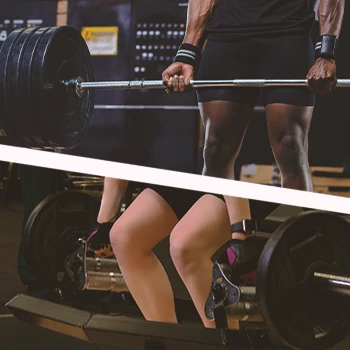
The trap bar (hex bar) and conventional barbell have distinct differences in shape, dimensions, learning curve, safety, sports application, and hand placement:
- Barbell shape and dimensions: Trap bars feature a hexagonal middle section with loadable sleeves on each end and raised handles on the sides. In contrast, the conventional barbell is a straight metal bar with a shaft in the middle and barbell sleeves on either end.
- Ease of learning: Trap bar deadlifts are generally easier to learn due to their higher starting position and reduced range of motion compared to conventional deadlifts. This makes the exercise more feasible for beginners to master proper technique.
- Safety: The trap bar deadlift is safer for individuals with lower back issues or limited core strength. It places less stress on the lumbar spine than the barbell deadlift, requiring a larger hip hinge and forward grip position.
- Sports performance: Both exercises can enhance performance by increasing explosive strength and power. However, with its body and hand positioning, the trap bar deadlift allows for more explosive movements, such as jumps and carries, providing additional benefits.
- Hand placements: In trap bar deadlifts, the handles are positioned at the sides, allowing only a neutral grip. On the other hand, the conventional barbell requires a mixed grip, with one palm facing down and the other hand facing up.
Comparative Analysis of Trap Bar Deadlift vs. Conventional

In my years as a trainer, I've noticed that both trap bar deadlifts and barbell deadlifts provide significant advantages while presenting minor limitations in comparison.
Trap Bar Deadlift: Pros
The trap bar deadlift is better than the conventional deadlift in the following terms:
- Beginner-friendly: The trap bar deadlift technique is easier to learn and requires less attention to detail than the barbell deadlift. The trap bar also allows you to perform most of the modified versions of barbell exercises.
- Lower risk of back injury: With the bar closer to the body's center, the trap bar deadlift minimizes stress on the spine, which, according to the National Institute of Health (NIH), makes it safer for individuals with back issues and the elderly [1].
- Increased quad activation: The trap bar deadlift recruits more muscle fibers in the quadriceps due to the body's seated-like position, benefiting hip flexion activities like walking, running, and jumping.
- Sports-specific training: Athletes aiming for speed, power, and strength can benefit from the trap bar deadlift, as its setup allows for faster and more vertical movements, translating well to sports performance.
Related Post:
Trap Bar Deadlift: Cons
The cons of the trap bar deadlift aren’t many. The only problem with the trap bar deadlift is that it requires access to a trap bar, which may not be available in all gyms.
Conventional Deadlift: Pros
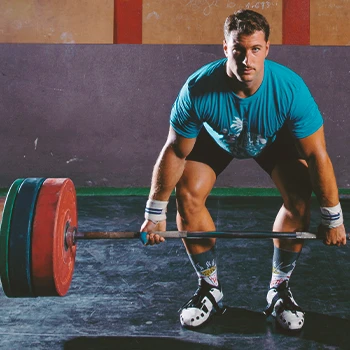
Here are some aspects where the conventional deadlift may surpass the trap bar deadlift:
- Versatile: Conventional deadlifts can be performed with various equipment, including barbells, dumbbells, or even unconventional objects like rocks or backpacks, making them accessible in different training environments.
- Back development: Barbell deadlifts are superior to trap bar deadlifts in building mass in the upper and lower back, targeting muscles beyond just the lats, unlike exercises such as lat pulldowns or bent-over rows.
- Grip strength enhancement: The exercise is beneficial for enhancing grip strength. Gripping the barbell with hands positioned outside the legs requires a firm grasp on the bar. Over time, this can contribute to improvements in grip strength.
Conventional Deadlift: Cons
The drawbacks of conventional barbell deadlifts include:
- Difficult technique: The barbell deadlift demands greater mobility in the hip and ankle joints, which may pose a challenge for individuals with a limited range of motion.
- Increased lower back stress: The conventional deadlift places more strain on the lower back than other exercises, such as the trap bar or Romanian deadlifts. While not necessarily problematic, it can be a potential concern for individuals with a history of recurrent back pain.
Muscles Worked

Deadlifts primarily engage the muscles in the legs as the main movers, but they also involve the posterior chain muscles in the back, core, and upper body to stabilize the weight.
The muscles worked include:
- Glutes: Assist in extending and stabilizing the hips during all deadlift variations.
- Hamstrings: Located on the back of the thighs, these muscles (biceps femoris, semitendinosus, and semimembranosus) act as hip extensors and work with the glutes to move the hips forward during the lift. They are also involved in knee flexion.
- Quadriceps: The front thigh muscles (rectus femoris, vastus lateralis, vastus medialis, and vastus intermedius) aid in knee extension, particularly during the initial lifting phase of the deadlift.
- Trapezius: Found in the upper back and neck region, these muscles provide shoulder stability during the bar lift and standing posture in all deadlift variations.
- Latissimus dorsi: This is a wing-shaped muscle on the back that constitutes the bulk of the posterior chain. It strengthens and stabilizes the mid-back during the lifting and lowering of the bar.
- Erector spinae: Long muscles running along the spine that keep the back flat and contribute to torso stability and posture when performing deadlifts.
What Are the Benefits?

Both trap bar deadlifts and conventional deadlifts yield significant benefits.
Properly executed deadlifts target the glutes and hamstrings, leading to strength improvements in the lower body.
Deadlifts can improve power output and vertical jump performance, benefiting basketball, volleyball, and soccer players.
A study by NIH shows that deadlifting for ten weeks can enhance rapid torque characteristics and increase vertical jump height [2].
"The stronger your deadlift, the better equipped you'll be to do things throughout your day without hitting muscular fatigue."
- Megan Daley, CrossFit Certified Trainer
Deadlifts strengthen the back, core, and overall posture, reducing back pain and improving resilience.
According to a study from the National Library of Medicine, both trap bars and conventional deadlifts help maintain bone density by stimulating bone development through muscle-induced mechanical loading [3].
What’s Better for Athletes?
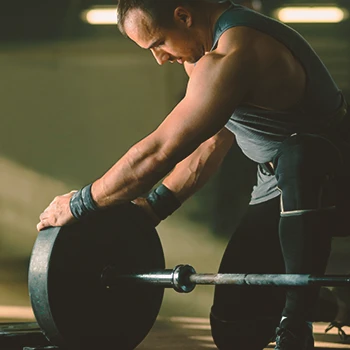
The trap bar deadlift is better for athletes, according to a study by NIH comparing the movement patterns of both deadlifts.
It outperforms the barbell deadlift in several aspects, including mean force, velocity, power, and total work, all of which contribute to athletic performance [4].
While the barbell deadlift is commonly seen in strength sports, the trap bar deadlift has a greater impact on performance.
Moreover, the trap bar deadlift allows individuals to lift heavier weights. So, it holds greater potential for improving athletic performance in non-lifting athletes.
FAQs
Is Trap Bar Deadlift Harder Than Conventional?
No, the trap bar deadlift is easier than the conventional barbell deadlift, especially for beginners. Trap bars allow for a more upright body position and place less stress on the lower back, making the variation a more accessible option than straight bar deadlifts.
Can You Lift More With a Trap Bar?
Yes, you can lift more weight with a trap bar than with a conventional barbell. The trap bar's design and mechanics allow for a more favorable lifting position, resulting in greater strength and power output.
References:
- https://pubmed.ncbi.nlm.nih.gov/21659894/
- https://pubmed.ncbi.nlm.nih.gov/25226322/
- https://www.ncbi.nlm.nih.gov/pmc/articles/PMC5601257/
- https://pubmed.ncbi.nlm.nih.gov/28151780/
About The Author
You May Also Like
